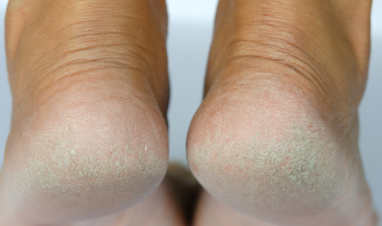Help for Cracked Heels
At Caring Podiatry, we know that dry skin—itchy, flaky, and annoying—definitely crosses the line into something more serious when it progresses to painful cracks and fissures in your heels. Find out the source of heel cracks and how to best take care of this podiatric skin issue.
Common Causes
The most frequent cause of cracked heels is extremely dry skin—also known as xerosis—which is quite common during the winter months for our Monmouth and Middlesex County patients. Other potential sources range in seriousness and include:
Wearing open-back shoes
Friction from footwear
Weight gain
Diabetes
Autonomic neuropathy—loss of nerve function
Due to the wide range of possible causes if you develop heel cracks, it’s advisable you contact our Monroe Township (609-860-9111) or our Neptune (732-455-8700) offices to make an appointment. This is particularly critical if you have diabetes, or another condition associated with poor circulation or suppressed immunity. Heel cracks provide easy access for bacteria and can quickly lead to an infection, which can be a serious medical threat to patients with these types of conditions.
Get Relief
Our podiatrists, Andrew Schmierer, Craig Shapero, and Mark Fillari will examine your cracked heels and also check your medical history to see if there are any underlying conditions that might be at the root of the problem. The podiatrist may also order lab tests to determine if there is a fungal or bacterial component to your skin condition.
If no complications are present, the foot doctor will carefully shave down the crack and remove the accumulation of dead, dried skin. (Warning: don’t try this at home—it will likely lead to injury and infection.) We will often prescribe Kera-42 foot cream which is a safe and effective urea-based moisturizing cream specifically formulated to exfoliate dead skin cells while restoring moisture to the newest cell layer. Its ingredients include tea tree oil, aloe vera and anti-oxidants for optimal treatment of severely dry skin. We recommend this be used in conjunction with moisturizing gel Heel Socks which protect the heels and feature a continual release gel moisturizer to tackle heel cracks quickly and efficiently.
This treatment plan usually puts an end to heel cracks. If you have concerns about the healing of your heels or experience new discomfort please contact us promptly.

